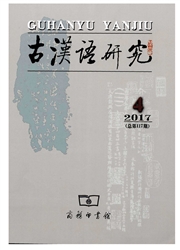

 中文摘要:
中文摘要:
受事话题句是能够反映汉语特点的一种重要句式,其在中古佛典中的分布情况跟本土传世文献差异较大。从我们所考察的东汉时期的安世高译经和魏晋南北朝时期的《贤愚经》、《杂宝藏经》、《百喻经》来看,东汉至魏晋南北朝,佛典中的受事话题句在类型用例、受事、述语和主语的结构构成等方面均发生一定的变化。主要表现为由光杆动词充当述语的受事话题句类型使用频率呈下降趋势;两个时期的受事话题虽然都由体词性和谓词性两种成分构成,但这两种成分在不同时期的用例比例有差异;在体词性受事中名词性偏正结构是优势结构,谓词性受事也都以复杂结构为主;在述语的构成方面,其前附和后附两种成分均呈递升趋势;历时层面上充当主语的成分在结构上变化不大,都是以简单形式为主,但充当主语的成分有所变化。
 英文摘要:
英文摘要:
Patient-Topic Sentences is a classic type of sentence in Chinese. It has a different distribution from what it is in traditional documents. In this thesis, we choose the Buddhist scriptures of An Shih-kao and other three ones as our research materials. By carefully statistical analysis, We draw our conclusion that many changes take place on the subtypes, constructions of patient topic, predicate, and subject. As follows, tile predicate with single verb shows a declining tendency; the patient topic consisted of nouns and verbs fluctuate in proportion; predicates with both adverbs and complements show ascending trends; although subject has little difference in structure , the sentence parts is quite different in different periods.
 同期刊论文项目
同期刊论文项目
 同项目期刊论文
同项目期刊论文
 期刊信息
期刊信息
